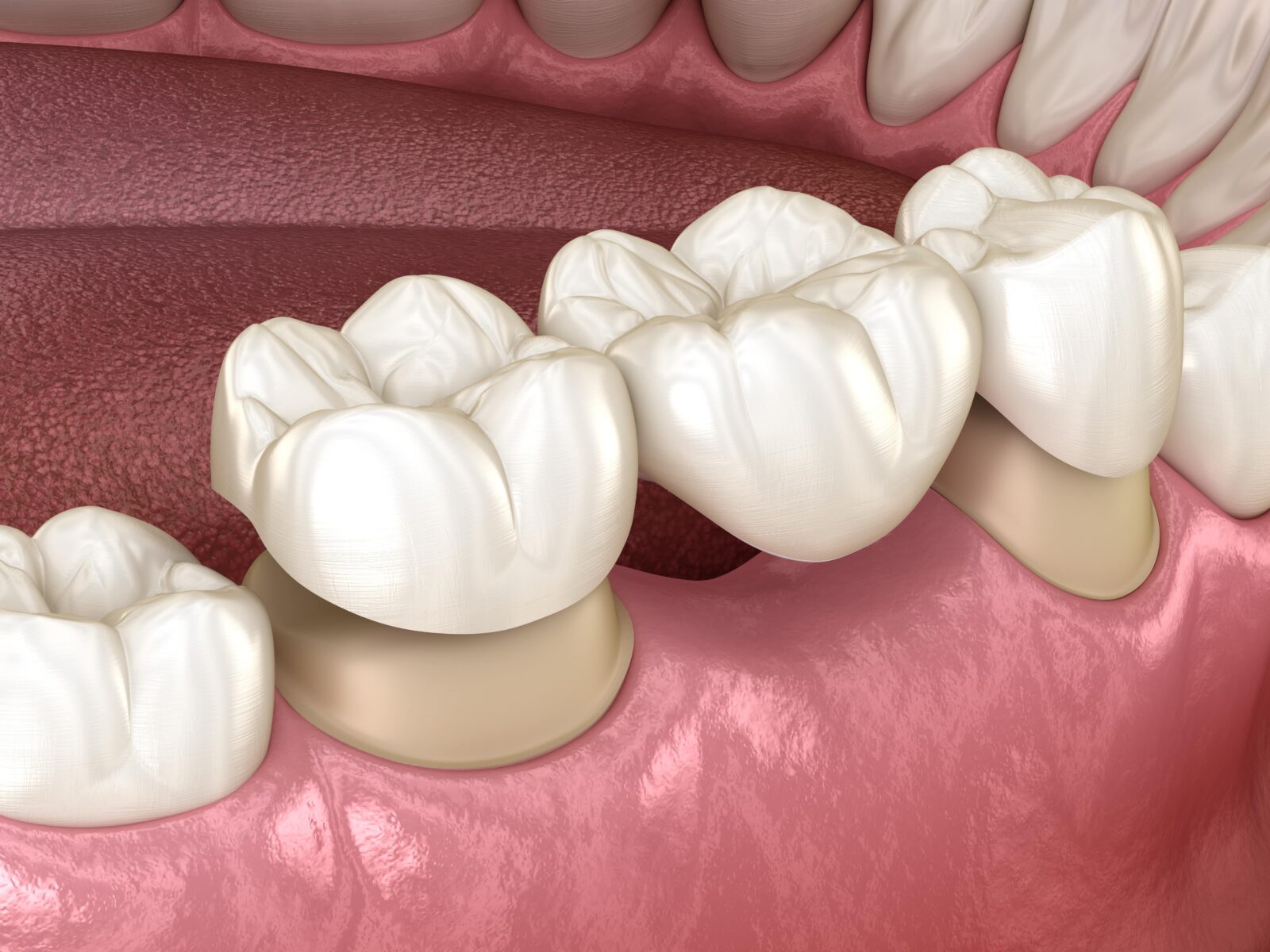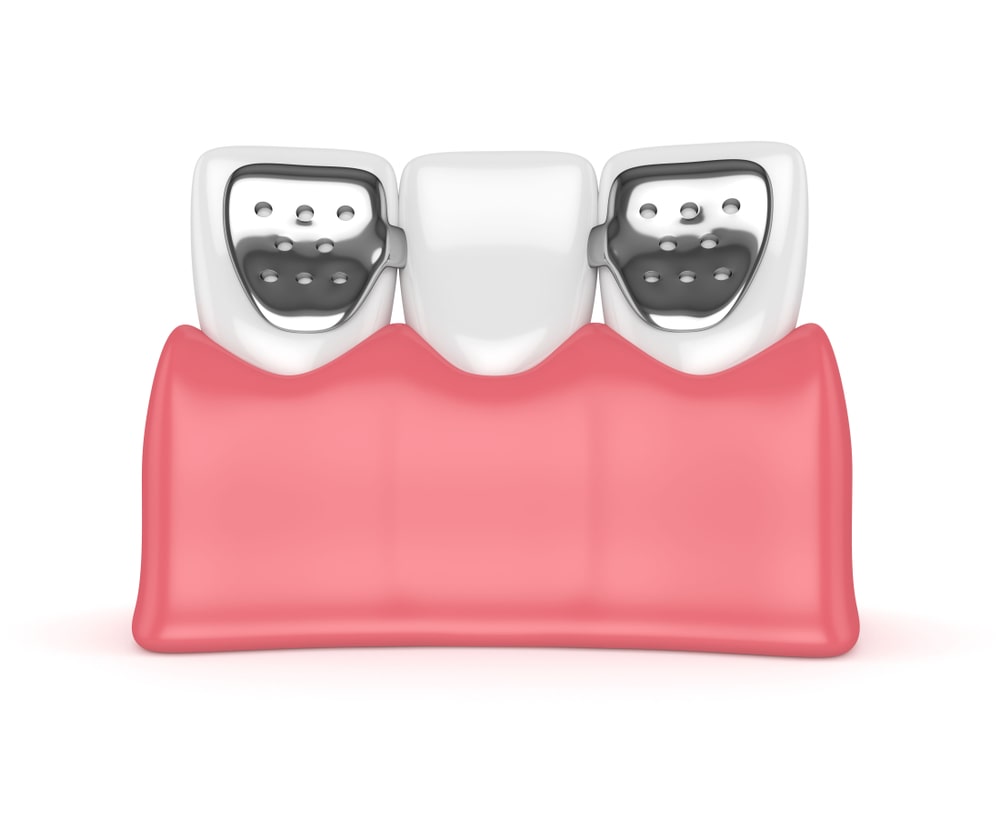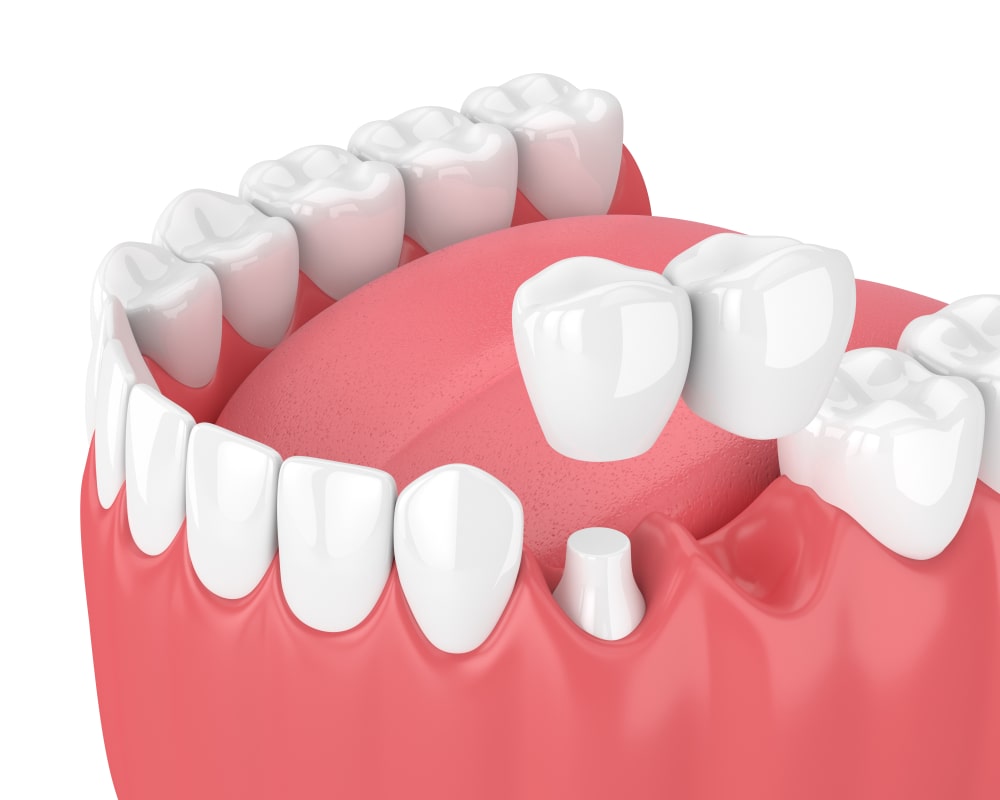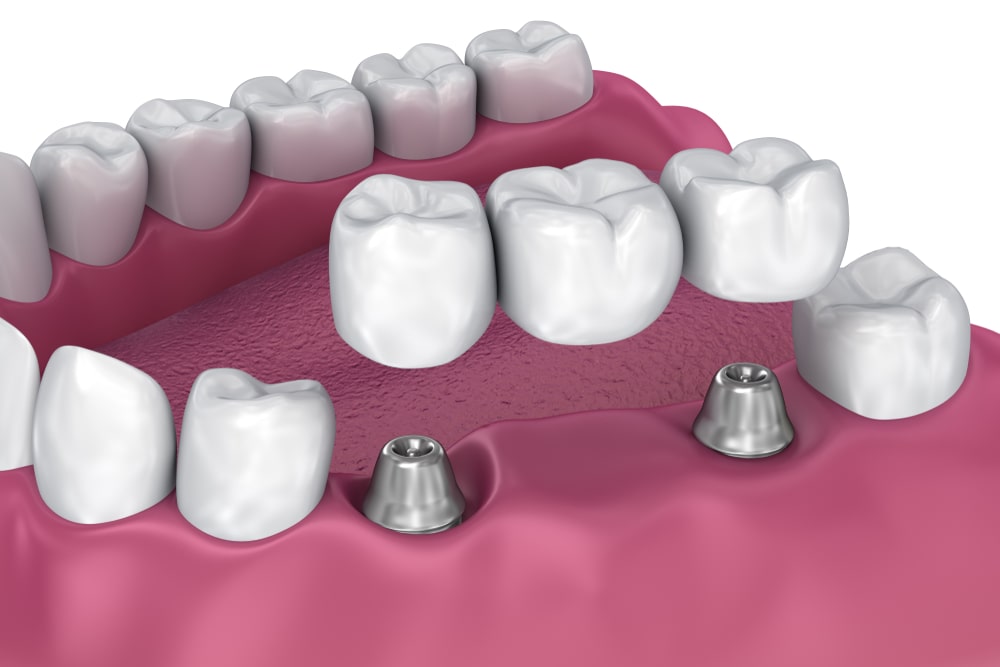People who are missing teeth often think that the only option for replacing them is dentures. However, there are several types of bridges that can help restore your smile and improve your quality of life! Dental bridges are a type of dental restoration that replaces missing teeth. They can be made from porcelain, metal alloys, or composite materials and cover the gap created by one or more missing teeth. There are four different types of dental bridges: traditional, Maryland, Cantilever and Implant-supported. In this blog post, we will discuss the differences between these four types of bridges.

Traditional Bridges:
Traditional bridges are the most common type of bridge and are made up of two dental crowns placed on either side of the missing tooth or teeth, with a pontic (false tooth) in between. The dental crowns are attached to healthy teeth on either side of the gap, to hold it in place. Traditional bridges are usually made from porcelain and are permanently cemented into position via the dental crowns on either side. Because of this, it is essential to have healthy, intact teeth on either side of the missing tooth.

Maryland Bridges:
A Maryland Bonded Bridge is a type of dental bridge that is made from metal alloys. It is similar to a traditional bridge, but the pontic is attached to metal bands that are bonded to the teeth on either side. Although this type of bridge uses metal to stay in place, the metal is cemented to the back of the teeth in order to prevent it from being seen. The pontic, of course, is still made from porcelain or composite to maintain a natural appearance. This type of bridge is less likely to damage the teeth on either side since it does not require the modification necessary for a dental crown.

Cantilever Bridges:
Cantilever bridges are used when there is only one healthy tooth surrounding a missing tooth. The bridge is anchored to the healthy tooth and the fake tooth extends out over the empty space. This type of bridge is not as common as other types, due to its instability. If the healthy tooth supporting the bridge fails, the entire bridge will fall out. When cantilever bridges are used, it is normally towards the front of the mouth.

Implant-Supported Bridges:
An implant-supported bridge is a type of dental bridge that uses dental implants to anchor the bridge in place. The dental implants are placed in the jawbone on either side of the empty space, and fake teeth are attached to the implants, as well as across the gap. This type of bridge is more stable than other types of bridges and lasts the longest. It is also the most natural looking option, since the dental implants are placed in the jawbone just like your natural teeth.
How are dental bridges placed?
Bridges are placed in a dental office and usually take two appointments to complete. The first appointment is for the preparation of the teeth and to take a dental impression for the final restoration. To prepare the teeth for a dental bridge, the surrounding teeth will need to be reduced in size to accommodate a dental crown. Dental sedation can be used during this appointment to keep you relaxed. However, this is not needed when a Maryland bridge is being placed. Once the dental lab has fabricated the bridge, then the second appointment is for the placement of the bridge itself.
For implant-supported bridges, the placement appointment is slightly more complicated since it includes the placement of the dental implants. The implant surgery is a minor procedure that can be completed in one visit also using dental sedation. However, the implants will need to heal before the bridge can be completed.
In Conclusion
Dental bridges are a common way to replace one or more missing teeth. There are four main types of bridges and your dentist will help you to determine which is right for you. Not only that, but dental sedation can be used to ensure that your experience is anxiety-free. To find out more about dental bridges, schedule an appointment with our office today!
